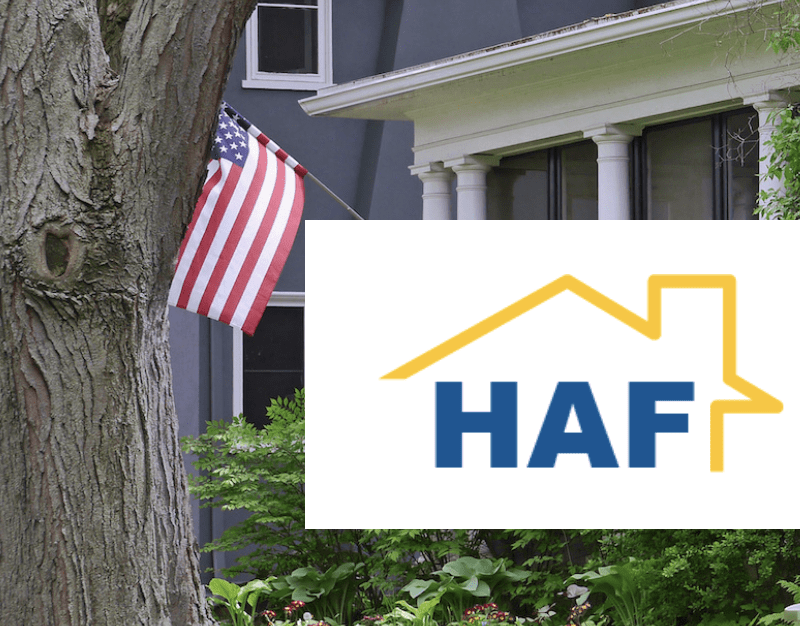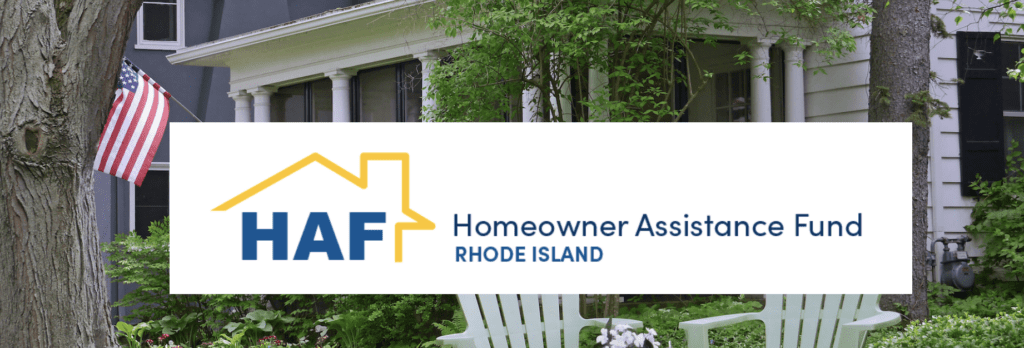Search Posts
Recent Posts
- Rhode Island Weather for April 29, 2024 – John Donnelly April 29, 2024
- Advocates, providers on new Nursing Home mandates – Herb Weiss April 29, 2024
- Business Beat: Abe Cohen new VP of Business Development for RI, Marquis Health Consulting April 29, 2024
- Business Monday: Working and playing into your 90s – Mary T. O’Sullivan April 29, 2024
- Rhode Island Weather for April 28, 2024 – John Donnelly April 28, 2024
Categories
Subscribe!
Thanks for subscribing! Please check your email for further instructions.

Little known Homeowner Assistance Fund will help eligible homeowners stay in their homes
Qualified Rhode Island homeowners may soon get assistance with overdue balances on their mortgages. As part of the American Rescue Plan, every state will be receiving millions of dollars to help qualified homeowners with mortgage delinquencies – who, without assistance, might be on their way to foreclosure.
The Homeowner Assistance Fund of Rhode Island is in addition to the program that allowed homeowners with an FHA, VA or USDA mortgage, who were experiencing a financial hardship such as unemployment, to request a mortgage forbearance. That program expires at the end of this month (September).
If you took advantage of the forbearance program, it does not mean that you won’t be eligible for the new program, which is designed to take care of sizeable amounts of overdue payments. Funds are paid directly to the mortgage company, so mortgage companies are eager to see this program begin. There are income eligibility requirements.
This program, enacted back in April, has yet to be activated in states, including Rhode Island. States had to submit their data and program plans by the end of August. Rhode Island submitted its plan around the 20th of August.
In Rhode Island the plan will come under Rhode Island Housing for administering. The amount of money Rhode Island will receive is an estimated $50 million, the minimum set for any state. The amount was determined by the number of delinquent mortgage payments in Rhode Island for the 4th quarter of 2020, the number of unemployed, and other measures.
Information on the program has been updated on the RI Housing site: “RIHousing will soon launch the Homeowner Assistance Fund Rhode Island (HAF-RI) program, which will help eligible Rhode Island homeowners remain in their homes. We understand the urgency to provide Rhode Islanders with the help they need. We expect the program to open in late September/early October 2021 pending U.S. Department of Treasury approval of our program design and the release of the program funding.”
Eligibility & Income Guidelines
Homeowner applicants must meet all of the following criteria to be eligible for assistance:
- Your household income must meet certain income limits which varies by household size.
- You must own and occupy a 1 to 4-unit dwelling in Rhode Island
- You must have experienced a COVID-19 related financial hardship after January 21, 2020
– A financial hardship is a material reduction of income or material increase in expenses
– Unemployment of mortgagor or other household members who contributed significantly to household income prior to January 21, 2020 is considered an eligible hardship - Your original mortgage balance must have been less than $548,250.
Income Guidelines for RI Homeowners:
150% Area Median Income Limits – FY2021:
1 person 2 person 3 person 4 person 5 person 6 person 7 person 8 person
$90,850 $103,800 $116,800 $129,750 $140,150 $150,550 $160,900 $171,300
_____
A very detailed Frequently Asked Questions section is available here at RI Housing, here: https://www.rihousing.com/hafri/
More from the federal government:
The American Rescue Plan Act of 2021 directs Treasury to allocate and make payments to States (including the District of Columbia and Puerto Rico) based on homeowner need as of the date of enactment (March 11, 2021), which is determined by reference to (1) the average number of unemployed individuals over a period of no fewer than three months and no more than 12 months and (2) the total number of mortgagors with (a) mortgage payments that are more than 30 days past due or (b) mortgages in foreclosure. The funds must be allocated by reference to these factors for each state relative to all states.
Number of Unemployed Individuals by State Data
Treasury will use seasonally adjusted data from the U.S. Bureau of Labor Statistics Local Area Unemployment Statistics (LAUS) for the purposes of determining the number of unemployed individuals in each state. The LAUS data are available at https://www.bls.gov/lau/data.htm.
Treasury will use a four-month average of each state’s seasonally adjusted number of unemployed individuals. The four-month average is used to smooth the month-to-month variation in the number of unemployed individuals. As of the date of enactment, the most recent four-month average available was from September 2020 to December 2020.
Number of Mortgagors Who Are Delinquent
Treasury will use the number of mortgagors with delinquent mortgage payments (more than 30 days past due). The number of mortgagors with delinquent mortgage payments better captures the homeowner need in each state because the rate of delinquent mortgage payments has increased substantially since the beginning of the pandemic, while the rate of foreclosures has remained relatively constant over the same period.
Treasury will use the number of delinquencies (in thousands) by state from the Mortgage Bankers Association and Haver Analytics. As of the date of enactment, the most data recent available were from the fourth quarter of 2020.
Weights on the Shares of the Number of Unemployed Individuals and of the Number of Mortgagors Who Are Delinquent
In calculating each state’s allocations, Treasury will distribute the funds using a weighted average of each state’s share of the total average number of unemployed individuals over the four-month period from September 2020 to December 2020 and each state’s share of the total number of mortgagors who are delinquent on their payments. Specifically, Treasury will weight each state’s share of the total average number of unemployed individuals by 0.25 and each state’s share of the total number of mortgagors who are delinquent on their payments by 0.75.
The table below includes each State’s allocation (which takes into account the statutory requirement that no State receive less than $50,000,000).
State Allocation
Alabama $125,695,705.00
Alaska $50,000,000.00
Arizona $196,984,339.00
Arkansas $63,330,313.00
California $1,055,489,843.00
Colorado $175,080,858.00
Connecticut $123,136,792.00
Delaware $50,000,000.00
District of Columbia $50,000,000.00
Florida $676,102,379.00
Georgia $354,185,231.00
Hawaii $50,000,000.00
Idaho $71,935,431.00
Illinois $386,903,117.00
Indiana $167,921,663.00
Iowa $50,000,000.00
Kansas $56,648,216.00
Kentucky $85,453,322.00
Louisiana $146,668,557.00
Maine $50,000,000.00
Maryland $248,588,848.00
Massachusetts $178,543,357.00
Michigan $242,812,277.00
Minnesota $128,663,948.00
Mississippi $72,281,675.00
Missouri $138,269,336.00
Montana $50,000,000.00
Nebraska $50,000,000.00
Nevada $120,917,256.00
New Hampshire $50,000,000.00
New Jersey $325,965,861.00
New Mexico $55,772,684.00
New York $539,458,518.00
North Carolina $273,337,247.00
North Dakota $50,000,000.00
Ohio $280,771,073.00
Oklahoma $87,056,967.00
Oregon $90,937,920.00
Pennsylvania $350,361,655.00
Puerto Rico $75,637,542.00
Rhode Island $50,000,000.00
South Carolina $144,650,807.00
South Dakota $50,000,000.00
Tennessee $168,239,035.00
Texas $842,214,006.00
Utah $66,030,555.00
Vermont $50,000,000.00
Virginia $258,444,431.00
Washington $173,153,935.00
West Virginia $50,000,000.00
Wisconsin $92,705,301.00
Wyoming $50,000,000.00
Total $9,390,350,000.00
US territories such as Samoa, etc. also have funds available.
With information coming soon, RIHousing is encouraging interested homeowners to put their names and emails on a form here: https://www.rihousing.com/hafri/ to receive information when the federal funds are released to Rhode Island, expected in late September or October.

